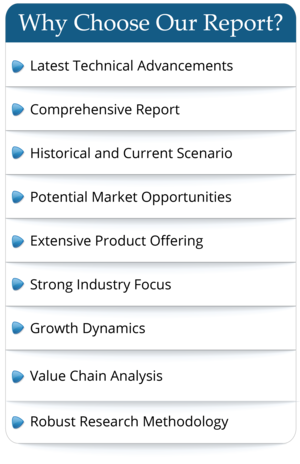Global Propylene-Glycol Alginate Market Research Report 2023-Competitive Analysis, Status and Outlook by Type, Downstream Industry, and Geography, Forecast to 2029
SKU ID : Maia-23523231 | Publishing Date : 12-Apr-2023 | No. of pages : 99
Market Overview
of Global Propylene-Glycol Alginate market:The latest research study on the global Propylene-Glycol Alginate market finds that the global Propylene-Glycol Alginate market reached a value of USD 358.59 million in 2022. It’s expected that the market will achieve USD 475.36 million by 2028, exhibiting a CAGR of 4.81% during the forecast period.
Propylene-Glycol Alginate is a food additive for stabilization, thickening and emulsification. Propylene-Glycol Alginate is the reaction product of propylene oxide and alginic acid. Alginic acid is a natural macromolecular polysaccharide extracted from deep-sea brown algae such as kelp and macroalgae. Therefore, alginic acid is mainly derived from brown seaweed. Brown seaweed was used for food centuries ago, but it wasn't until the 20th century that alginic acid was produced on an industrial scale. At present, many countries in the United States, Japan, South Korea, Russia, and China allow the use of Propylene-Glycol Alginate as a food additive, which is widely used in various foods. For example, the United States allows Propylene-Glycol Alginate as a food additive in 21 CFR § 172.858 of 1982. China approved its use as a food additive in 1988, and in November 2017, China's National Health and Family Planning Commission announced the application of PGA to expand the scope of use in fermented flour products, bread, cakes and other fields.
Strength
Propylene-Glycol Alginate has strong acid resistance and can be used in acidic environments with pH 3-5.
Propylene-Glycol Alginate has good foaming and emulsifying ability.
Propylene-Glycol Alginate has the properties of hydration, anti-aging and tissue improvement.
Weakness
Side effects of Propylene-Glycol Alginate. Propylene-Glycol Alginate may cause side effects when it comes into direct contact with the skin.
There are many food emulsifiers and thickeners on the market including Propylene-Glycol Alginate. Propylene-Glycol Alginate faces a certain threat of substitutes.
Opportunity
As the global population continues to expand and people's disposable income increases, the demand for food and beverages continues to increase. The growing scale of food and beverage industry development will increase the demand for Propylene-Glycol Alginate.
Continuously strengthen the research on Propylene-Glycol Alginate and expand the application field of Propylene-Glycol Alginate.
Threat
Raw material prices fluctuate. If the price of raw materials rises, the company's production costs will rise, affecting the company's production and operation.
The risk of international trade friction. International trade frictions may increase tariffs, resulting in cross-border Propylene-Glycol Alginate trade being affected.
Rising labor costs increase the company's production costs.
Region Overview:
Asia Pacific had the highest growth rate of all regions.
Company Overview:
Bright moon seaweed group is one of the major players operating in the Propylene-Glycol Alginate market, holding a share of 5.25% in 2022.
Bright moon seaweed group is a high-tech enterprise that develops and produces seaweed biological products using large marine brown algae as raw materials. Adhering to the mission of "Using marine resources to benefit human health", the company is committed to becoming a global leader in seaweed + health solutions in accordance with the development concept of "Strategic Ocean Starts with a Seaweed" and guided by the new STBC strategy. Bright moon seaweed group has built a new development pattern of seaweed health industry chain ecosystem with seaweed functional raw material industry, seaweed health product industry and seaweed cultural tourism industry interconnected.
Kimica is a company in Asia that has successfully produced alginate on a commercial scale. Today, the KIMICA factories in Japan and Chile, respectively, produce a full range of alginate products, which are sold around the world.
With worldwide concerns about healthcare, food safety, environmental issues, etc., the market demand for alginate, an extract derived from natural resources, is growing rapidly. The company mainly focuses on the manufacture and Production of marine biopolymers such as alginate and chitosan.
Segmentation Overview:
Among different product types, Capsule segment is anticipated to contribute the largest market share in 2027.
Application Overview:
By application, the Stabilizer segment occupied the biggest share from 2017 to 2022.
The report covers a research time span from 2018 to 2029; combines extensive quantitative analysis and exhaustive qualitative analysis; presents not only an overview of the global Propylene-Glycol Alginate market in metrics of sales, revenue, growth rate, but also a deeper dive into the segmented market by region, product type and downstream industry, showing the readers a clear and distinct picture of how the market is distributed from different perspectives.
For competitive landscape, prominent players with considerable market shares are comprehensively analyzed in this report. With information regarding the concentration ratio and detailed data reflecting the market performance of each player shared, the readers can acquire a holistic view of the competitive situation and a better understanding of their competitors.
As the COVID-19 takes over the world, we are continuously tracking the changes in the markets. We analyzed the impact of the pandemic in detail, along with other key factors, such as macro-economy, regional conflicts, industry related news and policies. Meanwhile, market investment scenario, technology status and developments, supply chain challenges, among other essential research elements are all covered.
Research Scope
This report provides an overview of the global Propylene-Glycol Alginate market and analyzes the segmented market by product type, downstream industry, and region, presenting data points such as sales, revenue, growth rate, explaining the current status and future trends of the Propylene-Glycol Alginate and its sub-markets in an intuitive way.
Key Companies in the global Propylene-Glycol Alginate market covered in Chapter 3:
Zhengzhou Yuhe Food Additives Co., Ltd.
AEP Colloids
Bright moon seaweed group
Qingdao Allforlong Biotech
Shandong Jiejing Group
Kimica
Foodchem International Corporation
In Chapter 4 and Chapter 14.2, on the basis of types, the Propylene-Glycol Alginate market from 2018 to 2029 is primarily split into:
Capsule
Oral Liquid
In Chapter 5 and Chapter 14.3, on the basis of Downstream Industry, the Propylene-Glycol Alginate market from 2018 to 2029 covers:
Thickener
Stabilizer
Emulsifier
Other
Geographically, the detailed analysis of consumption, revenue, market share and growth rate, historic and forecast (2018-2029) of the following regions are covered in Chapter 8 to Chapter 14:
North America (United States, Canada)
Europe (Germany, UK, France, Italy, Spain, Russia, Netherlands, Turkey, Switzerland, Sweden)
Asia Pacific (China, Japan, South Korea, Australia, India, Indonesia, Philippines, Malaysia)
Latin America (Brazil, Mexico, Argentina)
Middle East & Africa (Saudi Arabia, UAE, Egypt, South Africa)
Key Factors Considered
COVID-19
Amid the COVID-19 crisis, the Propylene-Glycol Alginate market has definitely taken a hit. The report describes the market scenario during and post the pandemic in the vision of upstream raw materials, major market participants, downstream major customers, etc. Other aspects, such as changes in consumer behavior, demand, transport capacity, trade flow under COVID-19, have also been taken into consideration during the process of the research.
Regional Conflict / Russia-Ukraine War
The report also presents the impact of regional conflict on this market in an effort to aid the readers to understand how the market has been adversely influenced and how it’s going to evolve in the years to come.
Challenges & Opportunities
Factors that may help create opportunities and boost profits for market players, as well as challenges that may restrain or even pose a threat to the development of the players, are revealed in the report, which can shed a light on strategic decisions and implementation.
Chapter Outline
Chapter 1 starts the report with a brief overview of the research scope, as well as the definitions of the target market and the subdivisions.
Chapter 2 integrates and sketches the research findings and conclusions in a clear and explicit way.
Chapter 3 presents the competitive landscape by displaying the sales, revenue, and market shares of the top players. It also profiles the major market participants with their business introductions, sales, price, revenue, gross, growth rates, etc.
Chapter 4 breaks down the market by different product types and shares data correspondingly with the aim of helping the readers know how the market is distributed by type.
Chapter 5 segments the market by downstream industry, with data covers sales, revenue, and growth rate tracing back to 2018.
Chapter 6 is the analysis of the whole market industrial chain, ranging from upstream raw materials to downstream customers, with regional conflicts taken into consideration.
Chapter 7 elaborates on market dynamics. Factors that drive, challenge, or restrain the market are all listed, together with industry news, opportunities, impacts of COVID-19, and SWOT analysis.
Chapter 8 shows the breakdown data at the regional level, which enables the readers to picture the regional competitive pattern of the market and learn about the revenue, sales, and market share of all the major regions.
Chapter 9-13 focus on each and every of the major region, specifically, North America, Europe, Asia Pacific, Latin America, Middle East & Africa. Sales, price, revenue, gross, gross margin, among others, will be all be presented.
Chapter 14 forecasts the future trend of the market not only as a whole but also from the perspective of all segments.
Years considered for this report:
Historical Years:
2018-2022Base Year:
2022Estimated Year:
2023Forecast Period:
2023-2029Frequently Asked Questions
- By product type
- By End User/Applications
- By Technology
- By Region

 Pre-order Enquiry
Pre-order Enquiry Request Free Sample
Request Free Sample


 Request Sample
Request Sample Request Discount
Request Discount










